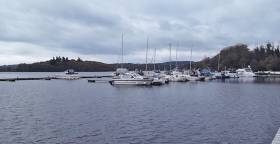Displaying items by tag: Michael Beattie
Coroner In Michael Beattie Inquest Calls For Compulsory Lifejackets On NI Waterways
#WaterSafety - Lifejackets should be made compulsory on Northern Ireland’s waterways, the inquest into the drowning of a former Lough Erne Yacht Club commodore has heard.
As BBC News reports, coroner Joe McCrisken suggested that Michael Beattie may have had a better chance of survival if he had been wearing a personal flotation device.
Beattie, whose body was found in the lough on 12 December last year, is thought to have slipped into the water in icy conditions while attempting to board his luxury motor cruiser the night before.
CCTV footage showed him struggling in the water for almost two hours hours before swimming to land, apparently in a confused state, and falling back into the water 90 minutes later.
The inquest found Beattie died from drowning as a result of cold water immersion and hypothermia.
“County Fermanagh has some of the most tranquil and beautiful waterways in the world, but water has inherent dangers,” McCrisken said.
BBC News has more on the story HERE.
NI Police Probe Drowning Of Experienced Sailor On Lough Erne
#LoughErne - The PSNI is investigating the death of a former Lough Erne Yacht Club commodore whose body was found in the lough last week.
As BelfastLive reports, the remains of Michael Beattie, 55, were discovered on the shore at Gublusk Bay on Tuesday 12 December.
Police are examining the circumstances of how the experienced sailor came to drown on the lough in freezing temperatures last Monday night (11 December).
It’s currently understood Beattie slipped on the steps of his luxury yacht and fell into the water.
“He would have known Lough Erne as much as everyone who knows it in Fermanagh, he would have known every wave of it,” said friend Adrian Lindsay.
























